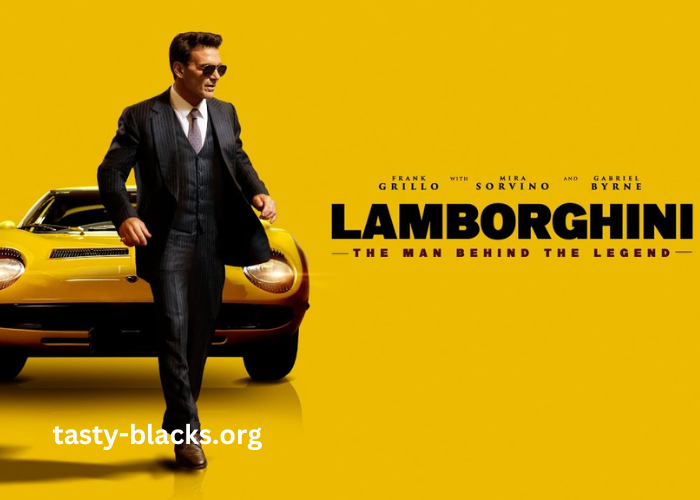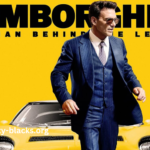In the world of high-performance automobiles, few names evoke as much admiration and excitement as Lamborghini. The brand is synonymous with luxury, speed, and innovation, but behind its legendary status lies the fascinating story of its founder, Ferruccio Lamborghini. Born in 1916 in Italy, Ferruccio’s journey from a humble upbringing to creating one of the most iconic automotive brands is filled with ambition, ingenuity, and a touch of rebellion. This article explores the life and legacy of Ferruccio Lamborghini, delving into how his vision transformed the automotive landscape and established Lamborghini as a symbol of excellence in engineering and design.
Who Was Ferruccio Lamborghini?
Ferruccio Lamborghini was born on April 28, 1916, in Cento, Italy. His upbringing in a rural area instilled in him a deep appreciation for mechanics and engineering. After serving in the Italian Air Force during World War II, Ferruccio returned home and began working in the agricultural machinery sector. In 1948, he founded Lamborghini Trattori, a company that manufactured tractors and quickly gained success in post-war Italy.
Despite his achievements in agriculture, Ferruccio was passionate about cars, particularly sports cars. His growing interest would eventually lead him to establish the legendary brand we know today. The transition from tractors to supercars was driven by his dissatisfaction with the luxury car market, particularly with the performance of Ferraris, which he believed could be improved upon. Thus, the foundation was laid for Lamborghini: The Man Behind the Legend.
What Inspired Ferruccio to Create Lamborghini?
Ferruccio Lamborghini’s passion for automobiles and engineering was fueled by a desire to create cars that embodied power, performance, and elegance. His experiences with various sports cars during the late 1950s and early 1960s played a crucial role in shaping his vision. After purchasing a Ferrari, he encountered issues with its clutch system, which led to a heated confrontation with Enzo Ferrari. This pivotal moment not only ignited his ambition but also spurred his determination to build a competitor that would rival Ferrari in the supercar market.
Ferruccio’s vision was not merely about creating a fast car; he wanted to craft a machine that combined performance with luxury. He aimed to create a vehicle that would appeal to drivers seeking both speed and comfort. This philosophy became the foundation of the Lamborghini: The Man Behind the Legend, where innovation and design would take center stage.
How Did Lamborghini Become an Iconic Brand?
The inception of the Lamborghini brand began in 1963, with the establishment of Automobili Lamborghini S.p.A. in Sant’Agata Bolognese. The company’s first model, the 350 GT, was launched in 1964 and received widespread acclaim for its design and performance. This success was followed by the introduction of the Miura in 1966, which is often considered the world’s first supercar due to its groundbreaking design and powerful engine.
The Miura’s mid-engine layout revolutionized automotive design, setting a new standard for performance vehicles. It captured the imagination of car enthusiasts worldwide and solidified Lamborghini’s reputation as a manufacturer of high-performance cars. This innovation laid the groundwork for subsequent models, establishing a legacy of excellence that would become synonymous with the brand. The story of Lamborghini: The Man Behind the Legend is inextricably linked to the evolution of the Miura and the bold design choices that characterized it.
What Were Some of the Key Models Produced by Lamborghini?
Throughout its history, Lamborghini has produced several iconic models that have defined the automotive landscape. Following the Miura, models such as the Countach and the Diablo emerged, each pushing the boundaries of design and engineering. The Countach, introduced in the 1970s, became an icon of the era, known for its sharp angles and distinctive scissor doors. Its aggressive styling and impressive performance captured the attention of car enthusiasts and cemented Lamborghini’s status as a leader in the supercar market.
In the 1990s, the Diablo continued the legacy of high-performance vehicles with a powerful V12 engine and a top speed that rivaled its competitors. These models not only showcased the engineering prowess of Lamborghini but also reflected Ferruccio’s vision of combining performance with striking aesthetics.
In more recent years, models such as the Gallardo and the Huracán have continued this tradition, blending advanced technology with the signature design language that Lamborghini is known for. Each new model released serves as a testament to the brand’s commitment to innovation and excellence, embodying the essence of Lamborghini: The Man Behind the Legend.
How Did Lamborghini Change the Automotive Industry?
The impact of Lamborghini: The Man Behind the Legend extends far beyond the vehicles themselves; it has transformed the automotive industry as a whole. Ferruccio Lamborghini’s approach to manufacturing emphasized not just speed but also style and comfort. This philosophy shifted the paradigm of what a sports car could be, challenging established norms and pushing competitors to rethink their designs.
Lamborghini’s introduction of the mid-engine layout was a game-changer, inspiring a generation of supercar manufacturers to adopt similar designs. The focus on aesthetics and performance redefined luxury in the automotive market, leading to an explosion of creativity and innovation in car design. This legacy continues to influence contemporary automotive engineering, where performance and visual appeal are paramount.
Moreover, Lamborghini’s success story serves as an inspiration for entrepreneurs and engineers alike, demonstrating the power of passion, innovation, and determination. Ferruccio’s journey from a tractor manufacturer to the helm of a supercar empire encapsulates the spirit of innovation that defines the automotive industry today.
What Challenges Did Lamborghini Face?
Despite its successes, Lamborghini: The Man Behind the Legend is not without its challenges. The brand faced numerous hurdles, particularly during the economic downturn of the 1970s. The oil crisis severely impacted luxury car sales, forcing Lamborghini to scale back production and rethink its strategy. Financial difficulties compounded by ownership changes threatened the brand’s survival.
Ferruccio Lamborghini eventually sold the company in 1972, and it went through several ownership changes in the following decades. Each transition brought new challenges and opportunities, impacting the brand’s direction and innovation. However, Lamborghini consistently managed to rebound, reinventing itself and staying true to its core values of performance and design.
The ability to adapt and innovate during tough times has been crucial to the brand’s longevity. Today, Lamborghini is a subsidiary of the Volkswagen Group, which has provided the resources necessary for continued growth and development, ensuring that the legacy of Lamborghini: The Man Behind the Legend endures.
How Does Lamborghini Maintain Its Legacy?
Maintaining the legacy of Lamborghini: The Man Behind the Legend requires a continuous commitment to innovation and quality. The brand invests heavily in research and development, ensuring that each new model reflects the latest advancements in technology and engineering. Collaborations with renowned designers and engineers further enhance Lamborghini’s reputation for excellence.
Lamborghini has also embraced sustainability, developing hybrid models that align with modern environmental standards while still delivering the performance expected from a supercar. This forward-thinking approach demonstrates the brand’s ability to evolve while staying true to its roots.
Additionally, Lamborghini’s involvement in motorsports showcases its dedication to performance and engineering excellence. Participation in racing events not only serves as a testing ground for new technologies but also reinforces the brand’s image as a leader in high-performance automobiles.
What Is the Future of Lamborghini?
The future of Lamborghini: The Man Behind the Legend looks promising as the brand continues to innovate and adapt to changing market demands. With the rise of electric vehicles and sustainable technologies, Lamborghini is poised to remain at the forefront of the automotive industry. The introduction of hybrid and electric models is a strategic move to meet the growing demand for eco-friendly alternatives while maintaining the thrilling performance that Lamborghini is known for.
As the brand continues to evolve, its commitment to design and engineering excellence will remain unchanged. Future models are likely to push the boundaries of what is possible in automotive design, combining cutting-edge technology with the iconic aesthetics that define Lamborghini.
Furthermore, the enduring legacy of Ferruccio Lamborghini serves as a guiding principle for the brand. His passion for innovation and performance continues to inspire the engineers and designers who carry forward his vision. The story of Lamborghini: The Man Behind the Legend is far from over, and the brand is set to embark on a new chapter in its illustrious history.
Conclusion
Lamborghini: The Man Behind the Legend is a captivating tale of ambition, innovation, and resilience. Ferruccio Lamborghini’s journey from a humble tractor manufacturer to the founder of an iconic supercar brand is a testament to the power of vision and determination. Through its groundbreaking designs and commitment to performance, Lamborghini has not only transformed the automotive landscape but also inspired generations of enthusiasts and entrepreneurs.
As the brand looks to the future, it remains rooted in the principles established by its founder. The legacy of Lamborghini is defined by a relentless pursuit of excellence and a passion for creating vehicles that captivate the imagination. The journey of Lamborghini: The Man Behind the Legend continues, promising an exciting future filled with innovation, performance, and the unmistakable allure of luxury automobiles.










